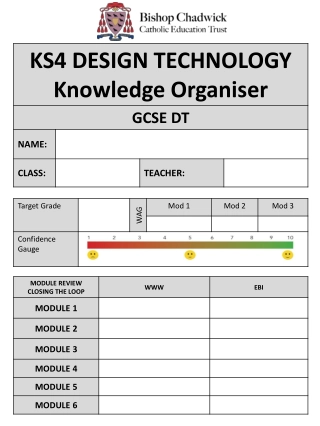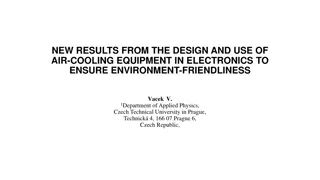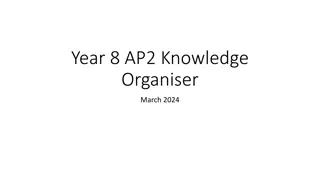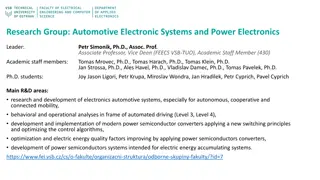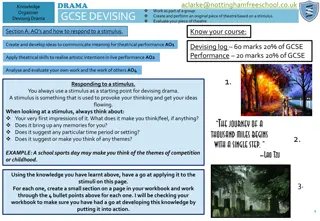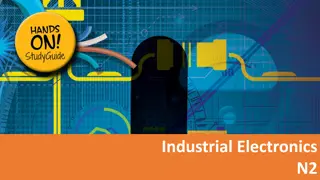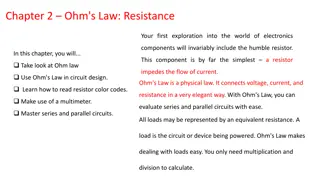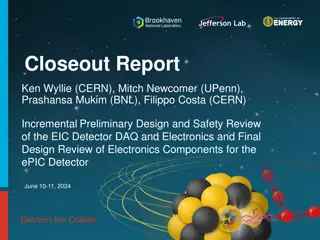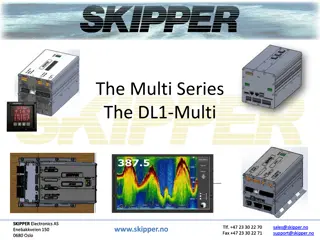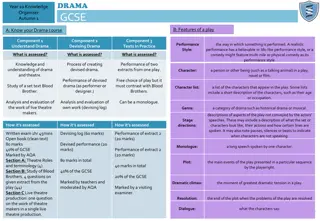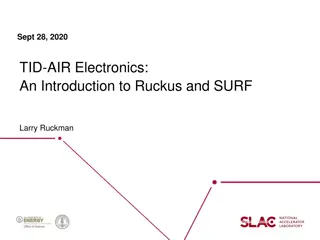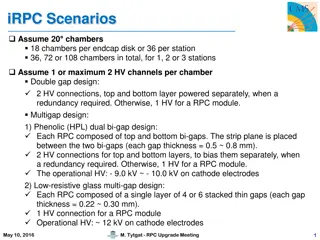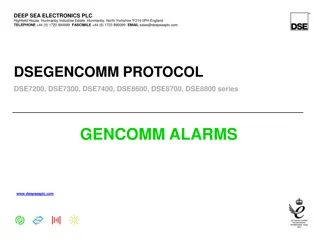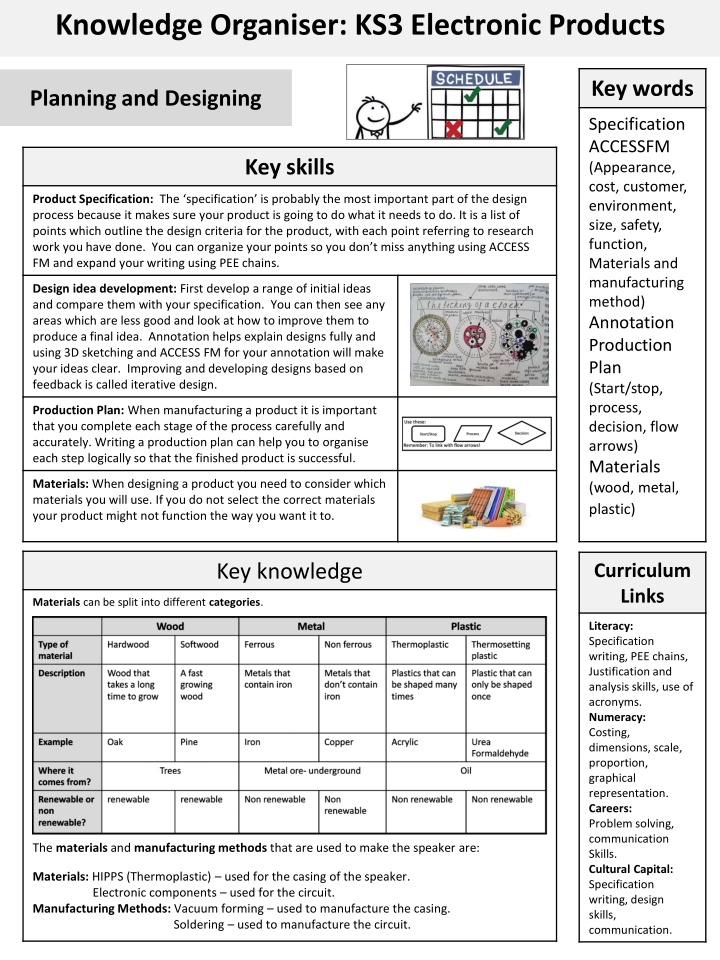
Key Skills in Electronic Product Design and Manufacturing
Explore the essential concepts of electronic product design, including planning, materials selection, production methods like vacuum forming and soldering, and key skills such as specification writing and annotation. Enhance your understanding of manufacturing processes and develop high-quality products through safe and efficient practices.
Download Presentation

Please find below an Image/Link to download the presentation.
The content on the website is provided AS IS for your information and personal use only. It may not be sold, licensed, or shared on other websites without obtaining consent from the author. If you encounter any issues during the download, it is possible that the publisher has removed the file from their server.
You are allowed to download the files provided on this website for personal or commercial use, subject to the condition that they are used lawfully. All files are the property of their respective owners.
The content on the website is provided AS IS for your information and personal use only. It may not be sold, licensed, or shared on other websites without obtaining consent from the author.
E N D
Presentation Transcript
Knowledge Organiser: KS3 Electronic Products Key words Planning and Designing Specification ACCESSFM (Appearance, cost, customer, environment, size, safety, function, Materials and manufacturing method) Annotation Production Plan (Start/stop, process, decision, flow arrows) Materials (wood, metal, plastic) Key skills Product Specification: The specification is probably the most important part of the design process because it makes sure your product is going to do what it needs to do. It is a list of points which outline the design criteria for the product, with each point referring to research work you have done. You can organize your points so you don t miss anything using ACCESS FM and expand your writing using PEE chains. Design idea development: First develop a range of initial ideas and compare them with your specification. You can then see any areas which are less good and look at how to improve them to produce a final idea. Annotation helps explain designs fully and using 3D sketching and ACCESS FM for your annotation will make your ideas clear. Improving and developing designs based on feedback is called iterative design. Production Plan: When manufacturing a product it is important that you complete each stage of the process carefully and accurately. Writing a production plan can help you to organise each step logically so that the finished product is successful. Materials: When designing a product you need to consider which materials you will use. If you do not select the correct materials your product might not function the way you want it to. Key knowledge Curriculum Links Materials can be split into different categories. Literacy: Specification writing, PEE chains, Justification and analysis skills, use of acronyms. Numeracy: Costing, dimensions, scale, proportion, graphical representation. Careers: Problem solving, communication Skills. Cultural Capital: Specification writing, design skills, communication. The materials and manufacturing methods that are used to make the speaker are: Materials: HIPPS (Thermoplastic) used for the casing of the speaker. Electronic components used for the circuit. Manufacturing Methods: Vacuum forming used to manufacture the casing. Soldering used to manufacture the circuit.
Knowledge Organiser: KS3 Electronic Products Key words Production Methods Vacuum Forming Mould Heater Template Coping Saw File Accuracy Soldering Iron Solder Components Risk Assessment Health and safety Key skills Manufacturing: Using key manufacturing skills safely and practicing to develop your skill and accuracy so that the products you make are high quality. In Electronic Product Design this includes hand tools, vacuum forming, laser cutting, belt sanding and drilling. Vacuum Forming: This is the production method that is used to manufacture the casing for the speaker. It involves using a suitable mould (wood) and heating a suitable material (plastic) on a vacuum forming machine. The plastic is heated until soft and then shaped around the mould. Hand Tools: A coping saw is often used to cut around shapes on wood and plastic because it allows you to cut curves accurately. A file is then used to smooth off any rough edges of the material so that the product is safe to use. Soldering: This is the production method that is used to manufacture the circuit for your speaker. It involves using a soldering iron and various electronic components to manufacture a circuit. The soldering iron is heated and solder is applied to components to join them to a circuit board. Curriculum Links Key knowledge The Vacuum Forming Process Literacy: Risk assessment, processing instructions, Use of technical documentation. Numeracy: Planning, dimensions, marking out. Careers: Problem solving, hand skills, communication Skills. Cultural Capital: H&S/Risk awareness, manufacturing skills, communication.
Knowledge Organiser: KS3 Electronic Products Key words Circuits and Components Testing Evaluation User Survey Feedback Soldering Iron Solder Components (LED, resistor, battery, LDR, lamp) Input Process Output Energy Sources Renewable Energy Key skills Testing and Evaluating: By comparing your finished product with the specification and also by asking for 3rd party feedback, you can identify strengths and weaknesses with the design and manufacture of the item. You can use this information to suggest ways it could be improved or developed in the future. User Survey: User surveys are used to find out whether your product is successful. It can help you find weaknesses and fix them before you mass produce your product. A user survey could include closed and open ended questions which allow you to analyse the answers and make improvements to your product. Systems: All systems have an INPUT, PROCESS and a OUTPUT. The INPUT is the component that makes the circuit work. E.g. A switch is used to turn a circuit on, this is an input. The PROCESS is the part that reacts to the input and the OUTPUT is a component that can change electrical energy into light or sound etc. Testing each system separately often makes it easier to fault find circuits. Energy Sources: Energy is present in all materials. These materials can be burnt to release the energy as heat. The heat is used to boil water to create steam. This steam then turns a turbine, this turbine powers a generator. A generator can change kinetic energy into electrical energy. Curriculum Links Key knowledge Literacy: Risk assessment, Processing instructions, Use of technical documentation. Evaluation. Numeracy: Checking, Estimating, Dimensions, Marking out. Careers: Problem solving, Hand skills, Communication skills. Cultural Capital: Manufacturing skills, Communication, Production.
Structuring your answers in Design Technology P.E.E Chains In Technology we use PEE chains to expand our answers so we are communicating our thoughts and ideas clearly. This makes sure that we say what we think and then back up, or justify, our thoughts with explanations and evidence from research which support them. POINT Say WHAT you think. I think the product should be EXPLAIN Say WHY you think it. This is because EVIDENCE Say what RESEARCH you ve done to back this up. I know this from my research into ACCESS FM ACCESS FM is an analysis and annotation tool which makes sure we consider all the important design criteria and the impact they have on products we are investigating, designing or evaluating, http://t0.gstatic.com/images?q=tbn:ANd9GcR5Dbus2_f_ZRz0f5AGHWzERzUpIL2l6dVJgbXulG_RPb6qUnlu2A Appearance Where did the designer get their inspiration? Could the product look better? Do you think it looks attractive or ugly, Why? What does the product look like? THINK shape, form, materials, size, beauty, ugliness. A http://britishdemocraticparty.org/wp-content/uploads/2013/06/money.gif Is it affordable to your customer? Will it make a profit? Is it value for money? How much does it cost to make? Cost C http://www.fasttrakauto.com/blog/wp-content/uploads/2013/04/TargetMarket.jpg Customer What impact would it have on a customers life? Why would a customer buy it? What makes it suitable for them? Who would buy it? Who would use it? C http://www.recycling.org.uk/images/recyclingbin.jpg Environment What is the products impact on the environment? THINK batteries, rethink, refuse, reduce, reuse, recycle, lifecycle. How would the product be disposed of? Is the product needed or wanted? How long will it last? http://us.123rf.com/400wm/400/400/arcady31/arcady311002/arcady31100200021/6388848-mortal-danger-sign.jpg E http://www.kingsbathroom.co.uk/news/wp-content/uploads/2012/07/tape-measure.jpg Safety Is the product high quality? Does it meet safety standards? How has the designer considered safety? Could the product hurt anyone? Are there any sharp edges? S http://www.carlisleschools.org/webpages/wolfer/imageGallery/ClipArt/Function%20machine.jpg Is it an appropriate size? Would it work better if it was bigger or smaller? Does it come in different sizes? How big is it? Size S Function Does the product work? Could the product work better? How does the product work? Why is the product needed? What does the product do? Is it easy to use? F http://www.rhodespackaging.co.uk/acatalog/retail-wholesale-packing-materials-aldershot-surrey-hampshire-gu.jpg Manufacture Materials/ What impact could the designer s choice of material have on the environment? Would a different material make it better? What material has it been made from? What process would be used to make it? M
Personalised Learning Checklist: KS3 Electronic Products Create a revision aid for each of the statements below, to prove you can do each one. If you can definitely do the full task, tick green. If you can do some of the task, tick amber. If you can do less than half of the task, tick red. If you have not ticked green, spend some extra time revising that area! What s a revision aid? This could be revision notes, a mind map, a list, flashcards. Whatever works for you! Look at the revision strategies page for more ideas. KS3 ELECTRONIC PRODUCTS Year 8 Module 1 Planning and Designing Draw a design for a child s toy and label the parts to explain your idea. Write a plan for the manufacture of your toy. Draw a design for a child s toy and annotate the idea using ACCESS FM. Write a plan for making the toy and include quality checks and timescales for making it. Draw a design for a child s toy, annotate the idea using ACCESS FM and use PEE chains to explain your decisions. Write a plan for making the toy and include quality checks and timescales for making it. Write a paragraph explaining how you would need to change this plan if you were making 100 of the product. Year 8 Module 2 Production methods Using words and diagrams show the stages of how vacuum forming works. Write a paragraph explaining the benefits of using the laser cutter in manufacturing. In a table compare and contrast the advantages and disadvantages of using the laser cutter and the vacuum former. Write a conclusion of what you have found. Write an essay discussing the following statement: Using machines to manufacture is bad for people because it costs jobs. Year 8 Module 3 Circuits and Components Make a poster showing all the different electronic components you have studied. Include their electronic symbols. Put 5 safety rules for soldering onto the back. Create a table showing the different components you used to make your circuit, their symbols and explaining the job that each one does Explain the steps for soldering safely and describe the risks if people do not follow the rules in the workshop. Label each component and explain what job it does. Write a paragraph explaining how you made the circuit safely and explain the reasons that the circuit might not work.

